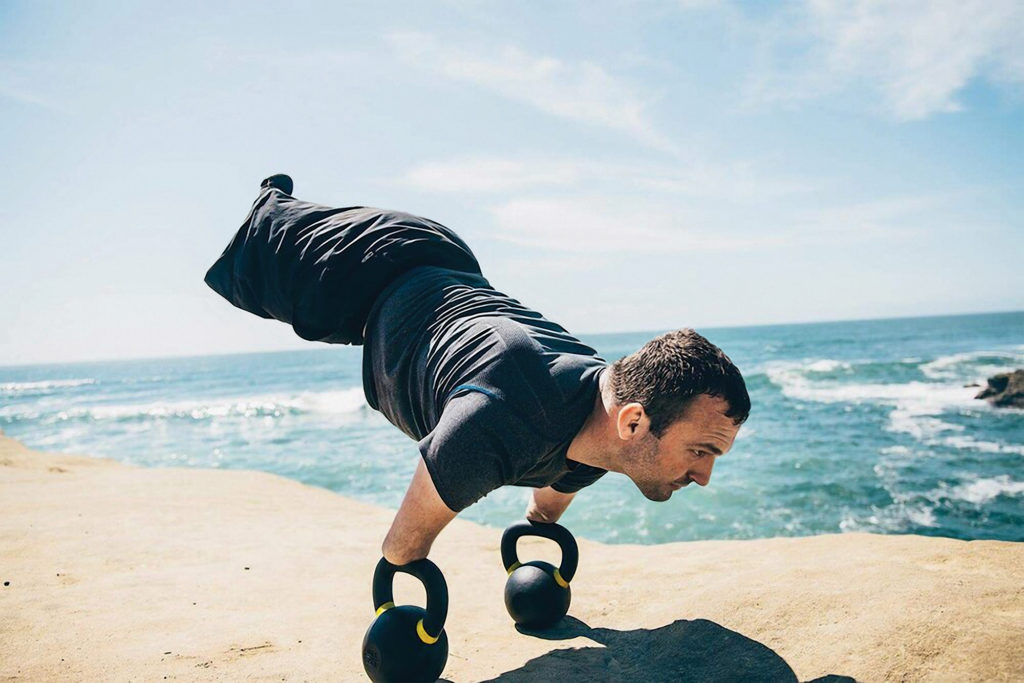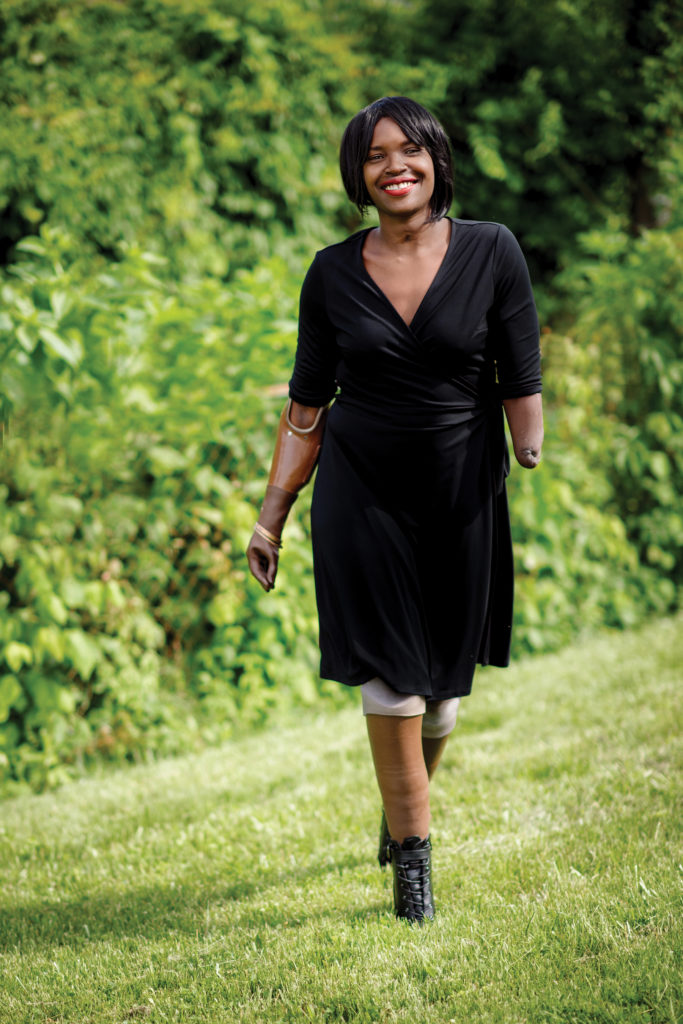By Elizabeth Bokfi
“…95 percent of it does suck. I’m staring at the dirt. I’m not even able to go and talk to my friends and see the beautiful views unless I stop and sit down and look; but that 5 percent that doesn’t suck–it’s amazing. Getting to a place that there’s no way my wheelchair could’ve brought me there–that’s what I love.” —Kyle Maynard, On Climbing
From Great Big Story, January 11, 2017
LIVING WITH LIMB LOSS is time consuming, challenging, and costly. It’s the reality of living with a disability. And so too is adaptation. But one of the amazing things about being human is how adaptable and resilient we can be. We gradually absorb the extra workload, the learning curves, and the costs; however, living with extreme limb loss is in a league of its own. It can present seemingly insurmountable challenges, physically and emotionally. Living one day at a time, celebrating the tiniest of milestones, and surrounding yourself with a solid support system can be a recipe for success, though. Life is worth living—with or without limbs.
Working the Weakness
The rugged slope crackles beneath him. Oxygen finds its way into his lungs through rasping breaths. At one point, he’s speechless—almost disheartened; but defeated? No. Watching Kyle Maynard navigate the grueling passage toward the summit of Mount Kilimanjaro is enough to elicit wincing from many a YouTube spectator.
Today, eight years since that climb, Maynard continues to challenge preconceptions about disability. Born a congenital amputee, the Buford, Georgia, athlete spends time between managing public speaking engagements and his CrossFit gym where some hard lessons are taught about determination, adaptation, and resourcefulness.
It isn’t always easy, although watching his Facebook and YouTube videos would make you think otherwise. It’s taken 34 years of living without limbs for Maynard to get to this point. One might even be tempted to go so far as to say his rugged good looks had something to do with his social media success. But just watch him power-lifting kettlebells or performing the simplest of tasks we take for granted—like zipping up a pair of jeans—and suddenly you’re seriously dialed in.
Growing up, Maynard was raised like any able-bodied child would be—with guidance and encouragement and through lessons of trial and error. He dressed up in costumes; roughhoused like any other boy his age; shoveled dirt into a toy dump truck; rode his tricycle; and, later, tended goal during road hockey.
“Family support made a huge difference,” says Maynard. “My grandparents were almost like a home [occupational therapy]. They would create challenges and have me stretch my limitations.”
Some skills were learned out of necessity. “I remember one time my parents were gone, and I needed to get a milk jug. I wanted to get a glass of milk. So now I have to figure this out. So I had to do this crazy pull up onto the countertop to grab the cup; then jump down off the counter top to get the milk out of the fridge; then open up the jug. Then it was really difficult to crack that seal off the jug.”
As an amputee, sometimes completing a basic task requires adapting the process. Maynard became interested in football during middle school and began playing in sixth grade. Because of his smaller size, he coined a few signature moves that carried him through three seasons. But while everyone else continued to grow stronger and taller, physically Maynard remained the same—no hands, no feet. He then turned his attention to wrestling. Loss after loss—35 to be exact—finally led Maynard to his first win, in seventh grade. Again, he’d modify existing techniques and incorporate them into his training.
Wrestling throughout his high school years, Maynard eventually garnered 36 victories and 16 losses, gradually transitioning him into mixed martial arts (MMA). (You can learn more about Maynard’s struggle for legal permission to compete against an able-bodied MMA fighter in the ESPN documentary A Fighting Chance: https://bit.ly/2XFzTUB.) The gym became his playground, and his first mantra—No Excuses—would later become part of the title of his New York Times best-selling autobiography, No Excuses: The True Story of a Congenital Amputee Who Became a Champion in Wrestling and in Life.
Nowhere was his determination and grit more apparent than when he announced his intent to climb to the summit of Mount Kilimanjaro—an adventure definitely not for the faint of heart. Together with a team of former US military veterans, Maynard began his ascent on January 6, 2012. Maynard completed the climb in ten days, bear crawling the entire 19,340 feet, using only custom-made socket covers attached to crampons and pads for grip. For completing his climb, that same year, he garnered his second ESPN ESPY (Excellence in Sports Performance Yearly) award—Best Male Athlete with a Disability.
With a long trail of accomplishments to his name, including appearances on The Oprah Winfrey Show and Larry King Live, Maynard continues to inspire and motivate, “working the weakness” (as he aptly titled one of his gym videos) at his CrossFit gym. During occasional bumps on the road that is life, Maynard adheres to the mantra “Not Dead, Can’t Quit!” coined by Navy SEAL Richard Machowicz (1965-2017). He lives independent of any adaptive devices or structural modifications to his current residence, which he shares with one of his sisters. Learning how to do ordinary activities of daily living in a modified manner is the only life he’s known. He drives, unloads and assembles his wheelchair, and shops. He types and texts like a wild man using his “elbows” and can crack an egg with amazing precision. The top three things he couldn’t live without? “My kettlebells, my pedals [in my adaptive vehicle], and my iPhone.”
Maynard has learned to not look so much at how far up a mountain he still has to climb, but instead below, at what he’s already conquered.


Continue to Be Great
Also a quadruple amputee, Rayna DuBose wears many hats. The 36-year-old Baltimore County, Maryland, resident keeps busy as head coach of Marriotts Ridge High School’s junior varsity basketball team and as a varsity football assistant coach—all between delivering motivational speeches and substitute teaching.
In 2002, after waking from three weeks of being in a medically induced coma at the University of Virginia Medical Center, DuBose was told that due to a loss of circulation, all four of her limbs needed to be amputated—a complication arising from her treatment for meningitis.
“[I was] devastated, scared, and confused,” says DuBose, who was then a freshman at Virginia Tech with a basketball scholarship. “I cried for a long time…. I asked my plastic surgeon if I would ever be able to play basketball again, and he said yes; then I felt hope.”
With this new sense of hope, DuBose began to achieve victories. “I remember the first time fastening my pants all by myself. I called home to my parents, screaming and yelling and just so excited that I did it. I remember telling them, ‘I’m going to be okay.’”
Triumph still comes with a price tag. It’s been expensive getting back to okay for DuBose, especially when the road to okay involves a myoelectric arm and five sets of legs.
“I have private insurance. The world helped me a lot—my hometown had mini-fairs and raised money. People donated—all over the world. Things are expensive. Over the years I’ve learned to adjust to life. When my arm breaks, I’m okay. I can still do everything without [the prosthesis]—better than when I’m wearing it.”
Like Maynard, DuBose also lives without household modifications. She also chooses to ignore phantom and residual limb pain rather than engage in a pain-management program, and she does not attend any support groups.
“I don’t take life for granted. I live each day to the fullest, and I’ve learned that as an athlete, life’s a game; it’s your opponent, and you have to determine how you’re going to [get] better and win.”
Attitude can really mean the difference between moving forward and being stuck. “I love being able to encourage my students and my student athletes every day that struggles [do] happen in life…. Don’t give up. There’s so much life to live, no matter what your situation is…. Continue to be great!”
TOP IMAGE: Maynard at Grand Canyon, Arizona. Image by Joey Leonardo, courtesy of Kyle Maynard.



